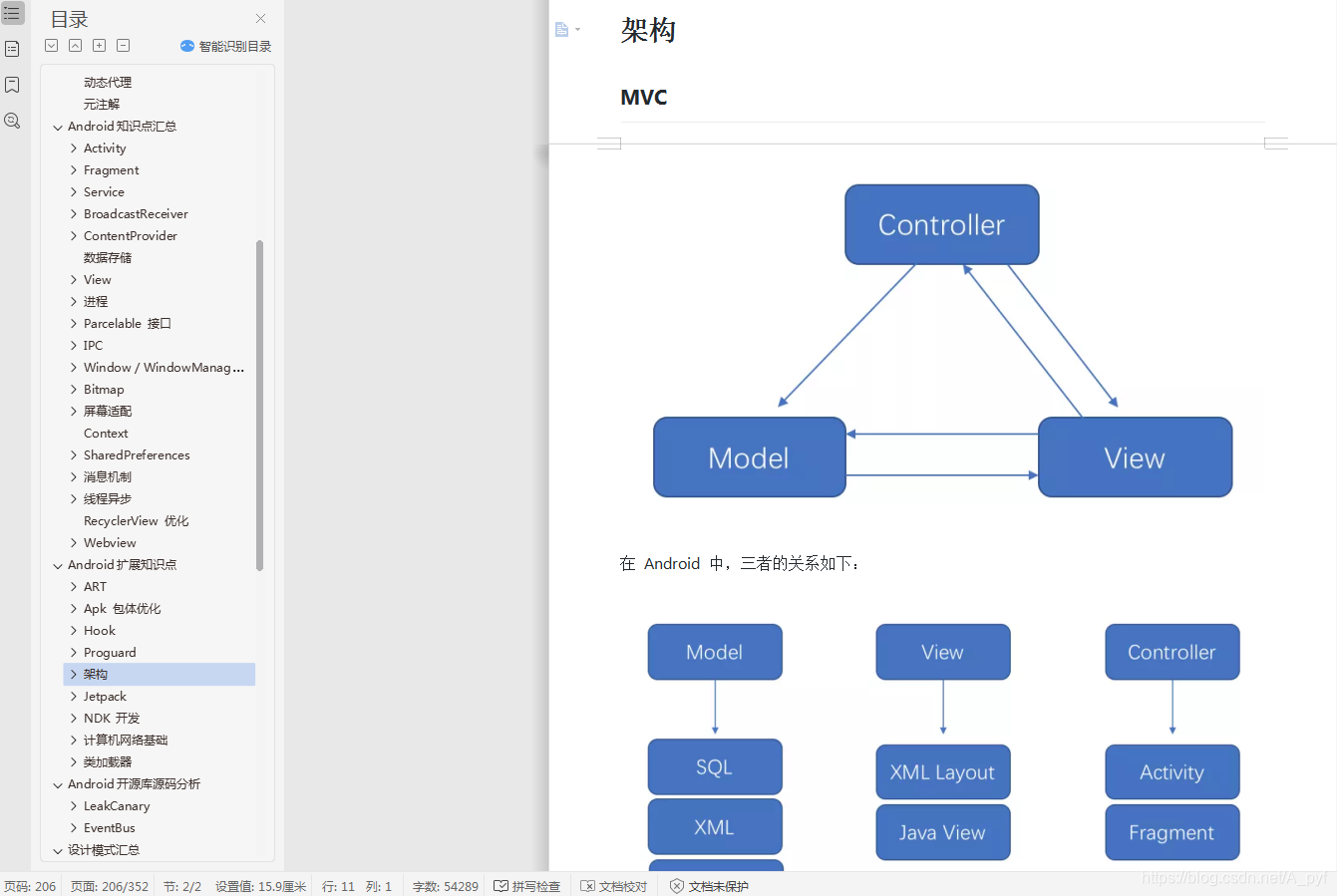我看来,Kotlin Coroutines(协程) 大大简化了同步和异步代码。但是,我发现了许多开发者在使用协程时会犯一些通用性的错误。
- 在使用协程时实例化一个新的 Job 实例
有时候你会需要一个 job 来对协程进行一些操作,例如,稍后取消。另外由于协程构建器 launch{} 和 async{} 都需要 job 作为入参,你可能会想到创建一个新的 job 实例作为参数来使用。这样的话,你就拥有了一个 job 引用,稍后你可以调用它的 .cancel() 方法。
fun main() = runBlocking {
val coroutineJob = Job()
launch(coroutineJob) {
println("performing some work in Coroutine")
delay(100)
}.invokeOnCompletion {
throwable ->
if (throwable is CancellationException) {
println("Coroutine was cancelled")
}
}
// cancel job while Coroutine performs work
delay(50)
coroutineJob.cancel()
}
这段代码看起来没有任何问题,协程被成功取消了。
>_
performing some work in Coroutine
Coroutine was cancelled
Process finished with exit code 0
但是,让我们试试在协程作用域 CoroutineScope 中运行这个协程,然后取消协程作用域而不是协程的 job 。
fun main() = runBlocking {
val scopeJob = Job()
val scope = CoroutineScope(scopeJob)
val coroutineJob = Job()
scope.launch(coroutineJob) {
println("performing some work in Coroutine")
delay(100)
}.invokeOnCompletion {
throwable ->
if (throwable is CancellationException) {
println("Coroutine was cancelled")
}
}
// cancel scope while Coroutine performs work
delay(50)
scope.cancel()
}
当作用域被取消时,它内部的所有协程都会被取消。但是当我们再次执行修改过的代码时,情况并不是这样。
>_
performing some work in Coroutine
Process finished with exit code 0
现在,协程没有被取消,Coroutine was cancelled 没有被打印。
为什么会这样?
原来,为了让异步/同步代码更加安全,协程提供了革命性的特性 —— “结构化并发” 。“结构化并发” 的一个机制就是:当作用域被取消时,就取消该作用域中的所有协程。为了保证这一机制正常工作,作用域的 job 和协程的 job 之前的层级结构如下图所示:.

在我们的例子中,发生了一些异常情况。通过向协程构建器 launch() 传递我们自己的 job 实例,实际上并没有把新的 job 实例和协程本身进行绑定,取而代之的是,它成为了新协程的父 job。所以你创建的新协程的父 job 并不是协程作用域的 job,而是新创建的 job 对象。
因此,协程的 job 和协程作用域的 job 此时并没有什么关联。

我们打破了结构化并发,因此当我们取消协程作用域时,协程将不再被取消。
解决方式是直接使用 launch() 返回的 job。
fun main() = runBlocking {
val scopeJob = Job()
val scope = CoroutineScope(scopeJob)
val coroutineJob = scope.launch {
println("performing some work in Coroutine")
delay(100)
}.invokeOnCompletion {
throwable ->
if (throwable is CancellationException) {
println("Coroutine was cancelled")
}
}
// cancel while coroutine performs work
delay(50)
scope.cancel()
}
这样,协程就可以随着作用域的取消而取消了。
>_
performing some work in Coroutine
Coroutine was cancelled
Process finished with exit code 0
2. 错误的使用 SupervisorJob
有时候你会使用 SupervisorJob 来达到下面的效果:
- 在 job 继承体系中停止异常向上传播
- 当一个协程失败时不影响其他的同级协程
由于协程构建器 launch{} 和 async{} 都可以传递 Job 作为入参,所以你可以考虑向构建器传递 SupervisorJob 实例。
launch(SupervisorJob()){
// Coroutine Body
}
但是,就像错误 1 ,这样会打破结构化并发的取消机制。正确的解决方式是使用 supervisorScope{} 作用域函数。
supervisorScope {
launch {
// Coroutine Body
}
}
3. 不支持取消
当你在自己定义的 suspend 函数中进行一些比较重的操作时,例如计算斐波拉契数列:
// factorial of n (n!) = 1 * 2 * 3 * 4 * ... * n
suspend fun calculateFactorialOf(number: Int): BigInteger =
withContext(Dispatchers.Default) {
var factorial = BigInteger.ONE
for (i in 1..number) {
factorial = factorial.multiply(BigInteger.valueOf(i.toLong()))
}
factorial
}
这个挂起函数有一个问题:它不支持 “合作式取消” 。这意味着即使执行这个函数的协程被提前取消了,它仍然会继续运行直到计算完成。为了避免这种情况,可以定期执行以下函数:
- ensureActive()
- isActive()
- yield()
下面的代码使用了 ensureActive() 来支持取消。
// factorial of n (n!) = 1 * 2 * 3 * 4 * ... * n
suspend fun calculateFactorialOf(number: Int): BigInteger =
withContext(Dispatchers.Default) {
var factorial = BigInteger.ONE
for (i in 1..number) {
ensureActive()
factorial = factorial.multiply(BigInteger.valueOf(i.toLong()))
}
factorial
}
Kotlin 标准库中的挂起函数(如 delay()) 都是可以配合取消的。但是对于你自己的挂起函数,不要忘记考虑取消的情况。
4. 进行网络请求或者数据库查询时切换调度器
这一项并不真的是一个 “错误” ,但是仍可能让你的代码难以理解,甚至更加低效。一些开发者认为当调用协程时,就应该切换到后台调度器,例如,进行网络请求的 Retrofit 的 suspend 函数,进行数据库操作的 Room 的 suspend 函数。
这并不是必须的。因为所有的挂起函数都应该是主线程安全的,Retrofit 和 Room 都遵循了这一约定。
5. 尝试使用 try/catch 来处理协程的异常
协程的异常处理很复杂,我花了相当多的时间才完全理解,并通过 博客 和 讲座 向其他开发者进行了解释。我还作了一些 图 来总结这个复杂的话题。
关于 Kotlin 协程异常处理最不直观的方面之一是,你不能使用 try-catch 来捕获异常。
fun main() = runBlocking<Unit> {
try {
launch {
throw Exception()
}
} catch (exception: Exception) {
println("Handled $exception")
}
}
如果运行上面的代码,异常不会被处理并且应用会 crash 。
>_
Exception in thread "main" java.lang.Exception
Process finished with exit code 1
Kotlin Coroutines 让我们可以用传统的编码方式书写异步代码。但是,在异常处理方面,并没有如大多数开发者想的那样使用传统的 try-catch 机制。如果你想处理异常,在协程内直接使用 try-catch 或者使用 CoroutineExceptionHandler 。
6. 在子协程中使用 CoroutineExceptionHandler
再来一条简明扼要的:在子协程的构建器中使用 CoroutineExceptionHandler 不会有任何效果。这是因为异常处理是代理给父协程的。因为,你必须在根或者父协程或者 CoroutineScope 中使用 CoroutineExceptionHandler 。
7. 捕获 CancellationExceptions
当协程被取消,正在执行的挂起函数会抛出 CancellationException 。这通常会导致协程发生 “异常” 并且立即停止运行。如下面代码所示:
fun main() = runBlocking {
val job = launch {
println("Performing network request in Coroutine")
delay(1000)
println("Coroutine still running ... ")
}
delay(500)
job.cancel()
}
500 ms 之后,挂起函数 delay() 抛出了 CancellationException ,协程 “异常结束” 并且停止运行。
_
Performing network request in Coroutine
Process finished with exit code 0
现在让我们假设 delay() 代表一个网络请求,为了处理网络请求可能发生的异常,我们用 try-catch 代码块来捕获所有异常。
fun main() = runBlocking {
val job = launch {
try {
println("Performing network request in Coroutine")
delay(1000)
} catch (e: Exception) {
println("Handled exception in Coroutine")
}
println("Coroutine still running ... ")
}
delay(500)
job.cancel()
}
现在,假设服务端发生了 bug 。catch 分支不仅会捕获错误网络请求的 HttpException ,对于 CancellationExceptions 也是。因此协程不会 “异常停止”,而是继续运行。
_
Performing network request in Coroutine
Handled exception in Coroutine
Coroutine still running …
Process finished with exit code 0
这可能导致设备资源浪费,甚至在某些情况下导致崩溃。
要解决这个问题,我们可以只捕获 HttpException 。
fun main() = runBlocking {
val job = launch {
try {
println("Performing network request in Coroutine")
delay(1000)
} catch (e: HttpException) {
println("Handled exception in Coroutine")
}
println("Coroutine still running ... ")
}
delay(500)
job.cancel()
}
或者再次抛出 CancellationExceptions 。
fun main() = runBlocking {
val job = launch {
try {
println("Performing network request in Coroutine")
delay(1000)
} catch (e: Exception) {
if (e is CancellationException) {
throw e
}
println("Handled exception in Coroutine")
}
println("Coroutine still running ... ")
}
delay(500)
job.cancel()
}
以上就是使用 Kotlin Coroutines 最常见的 7 个错误。如果你了解其他常见错误,欢迎在评论区留言!
另外,不要忘记向其他开发者分享这篇文章以免发生这样的错误。谢谢!
最后
Android学习是一条漫长的道路,我们要学习的东西不仅仅只有表面的 技术,还要深入底层,弄明白下面的 原理,只有这样,我们才能够提高自己的竞争力,在当今这个竞争激烈的世界里立足。
如果大家也想提升自己的技术,在这我也分享一份大佬收录整理的Android学习PDF+架构视频+面试文档+源码笔记,高级架构技术进阶脑图、Android开发面试专题资料,高级进阶架构资料,有想要资料的可以私信我【资料】免费获取。
